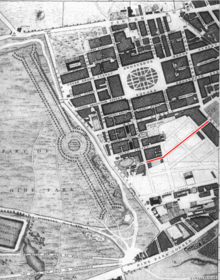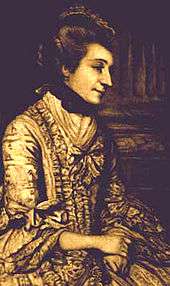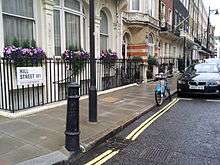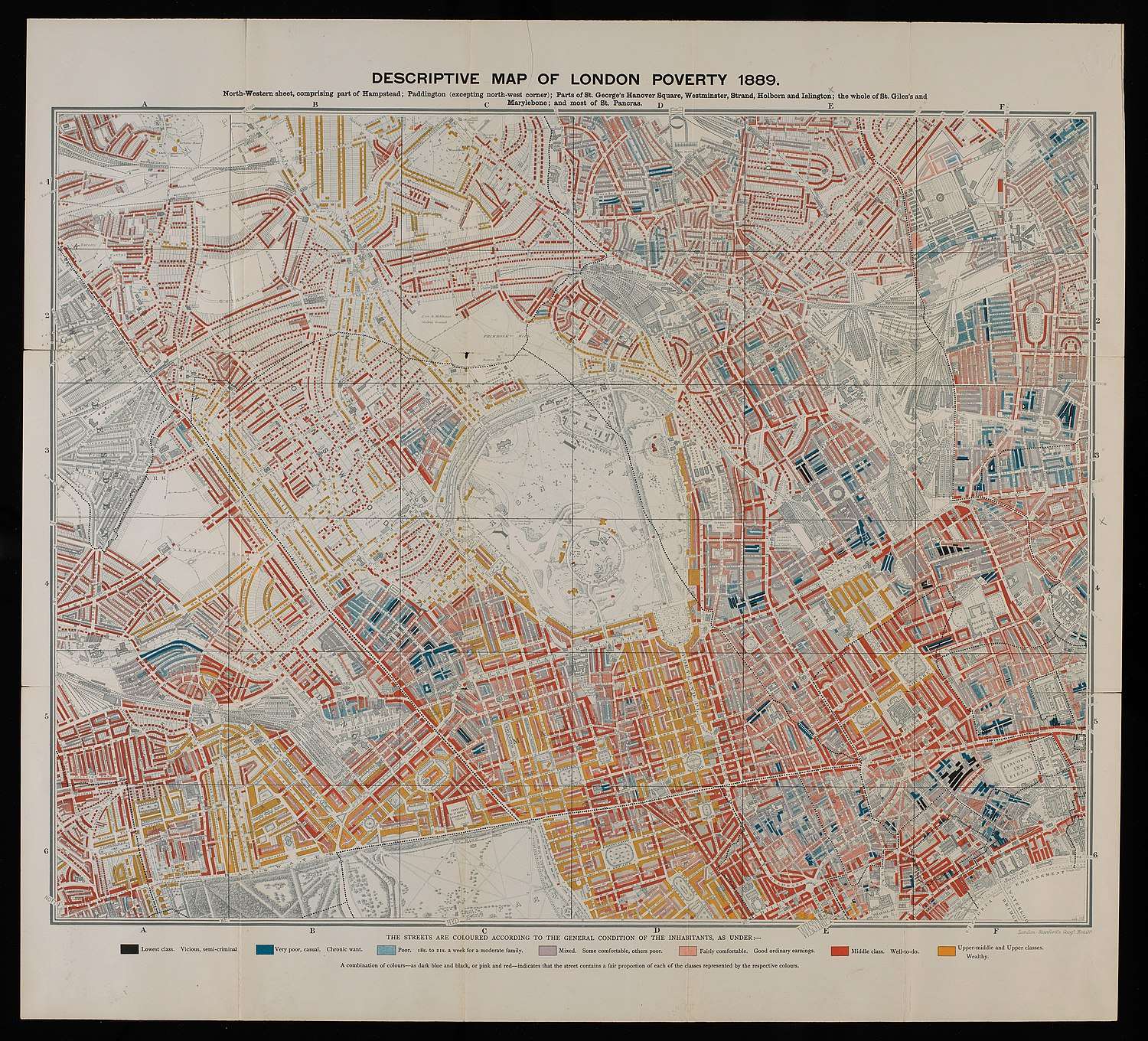Hill Street, London
Hill Street is a street in Mayfair, London which runs SW then W from Berkeley Square to Deanery Street, a short approach way from Park Lane. It was developed from farmland in the 18th century.[3] One block to the east and south sees a fall of about three metres whereas its eminence rises gradually six main blocks to beyond the north of Marble Arch in the other direction (see Hyde Park). Its homes gained fashionable status from the outset: grand townhouses seeing use as seasonal lettings (rentals) and/or longer-term London homes of nobility — then of other wealthy capitalists as much. In heritage and architecture, twenty-two, approximately half of its town houses, are listed. Along its course Audley Square House only departs from townhouse-size frontage. This shares in its predominant form of domestic architecture, Georgian neo-classical. Its public house is the oldest surviving instance within Mayfair.
.jpg)
Development and architecture

The street's development was overseen in the 1740s by local landowner Lord Berkeley, who owned the house, gardens and farm holdings which took up Berkeley Square and beyond. When John Rocque mapped London in 1746, most streets on the west side of this square were shown in outline as building was underway; the street was among the last area of farmland thus crosses "Farm" Street. Hill Street is the same as Mount Street and others to the north (dropping a little over three metres) to the east end, but here the land falls the same amount but more rapidly to the next block south, scaled by Chesterfield Hill (earlier John Street) and Hays Mews; similarly to the east where the Tyburn ran.[4]
Foremost architects used were Benjamin Timbrell, as to №s17 and 19 c.1748,[5] and Oliver Hill, as to №15 in the 1920s.[6]
Claud Phillimore refurbished №s35 for Lady Astor in the late 1940s giving six storeys and a basement for a grand and comfortable residence. Lady Astor's personal living room – "the Boudoir" – had walls decorated with blue satin.[7] Twenty-two of the town houses are listed buildings: №s1 and 3,[8] 7,[9] 8,[10] 9,[11] 10,[12] 11,[13] 20,[14] 22,[15] 25,[16] 26,[17] 29,[18] 31,[19] 33,[20] 35,[21] 36,[22] 38,[23] 40,[24] and 42 and 44 Hill Street are listed Grade II;[25] №19 is Grade II*; then №17 has highest Grade I status.[26][27]
Literary associations
Doctor Johnson and the Fair Sex: A Study of Contrasts, W. H. Craig, 1895

Mrs. Montagu hosted a literary salon at her new house in Hill Street. Her circle was known as the Blue Stockings Society and Doctor Johnson called her the "Queen of the Blues".[28] Other luminaries who attended her gatherings included Edmund Burke, David Garrick, Joshua Reynolds and Horace Walpole.[28]
In Jane Austen's novel Mansfield Park, Henry and Mary Crawford's uncle is an admiral living in Hill Street.[29] Sir Walter Scott's novel Waverley was published at the same time. In this, the hero's father is a Whig politician who lives in Hill Street.[30]
In Thackeray's Vanity Fair, several characters live on Great Gaunt Street or the adjoining Gaunt Square, including Sir Pitt Crawley and Lord and Lady Steyne. This fictional street was based upon Hill Street.[31] In addition, Lady Bareacres lives on the actual Hill Street.
Evelyn Waugh satirised Mayfair decadence in his novel Vile Bodies. In this, along Hill Street stood fictional Pastmaster House – "the William and Mary mansion of Lord and Lady Metroland with a magnificent ballroom, 'by universal consent the most beautiful building between Bond Street and Park Lane'".[32]
The bright young thing society novelist Nancy Mitford stayed at 40 in 1955.[33]
Prestige

This was among the prestigious streets of wealthy socialites and politicians of London in the 18th and 19th centuries and notable residents have included:
- Lord Barrymore - №20[36]
- Lord Brougham - №5[36]
- Admiral Byng in 1756;[36][37] in 1757 he was sentenced to death and shot for losing Minorca in the Seven Years' War.[38]
- Lord Chief Justice Camden died here in 1794.[36][37]
- Lord Morpeth, 7th Earl of Carlisle was born here in 1802.[36][37]
- Lord Colborne - №19 where he collected paintings.[37]
- Countess of Darnley - №21[36]
- Admiral Philip Durham - №9[36]
- Master of the Rolls, Sir William Grant - №21.[37]
- Lord Hindlip - №33[36]
- Sir Abraham Hume, 1st Baronet and his son the 2nd Baronet - variously №s 17, 19 and 29.[5][37]
- Lord Londesborough[36]
- Chancellor of the Exchequer, Lord Lyttelton and his wicked son Thomas.[36][37]
- The Mackintosh of Mackintosh - №8[36]
- Earl of Malmesbury died here whilst renting №21 in 1820.[36][37]
- Philip Metcalfe, distiller and patron of the arts, - №20.[37]
- Mrs. Montagu held literary parties here.[3][36][37]
- Lord Revelstoke - №26[36]
- Countess of Roden - №27[36]
- Sir Evelyn Ruggles-Brise - №41[36]
- Lord de Tabley collected and exhibited paintings and sculptures of the English school - №24.[37]
- Marquess of Tweeddale - №6[36]
- Lady Vane, the adulteress whose memoirs appeared in The Adventures of Peregrine Pickle, died here in 1788.[36][37]
- Sir Charles Welby - №34[36]
- Whig politician William Windham - №20.[37]
- Lord Westbury - №30[36]
- Garnet Wolseley, 1st Viscount Wolseley, field marshal, - №6[39]
References
- Coach & Horses, London, Shepherd Neame
- Historic England (1 December 1987). "Coach and Horses public house (1357097)". National Heritage List for England. Retrieved 12 October 2013.
- Jerry White (2013), A Great and Monstrous Thing: London in the eighteenth century, Harvard University Press, pp. 31, 107, ISBN 9780674076402
- Edward Walford (1878), "Berkeley Square and its neighbourhood", Old and New London, Vol. 4, pp. 326–338
- "19, Hill Street W1, Westminster". British Listed Buildings. Retrieved 10 October 2013.
- Oliver Bradbury (2008), The Lost Mansions of Mayfair, p. 26, ISBN 9781905286232
- Adrian Fort (2012), Nancy: The Story of Lady Astor, Random House, p. 316, ISBN 9780224090162
- Historic England, "1 and 3 Hill Street, W1 (1278328)", National Heritage List for England, retrieved 20 March 2018
- Historic England, "7 Hill Street, W1 (1231000)", National Heritage List for England, retrieved 20 March 2018
- Historic England, "8 Hill Street, W1 (1066628)", National Heritage List for England, retrieved 20 March 2018
- Historic England, "9 Hill Street, W1 (1066658)", National Heritage List for England, retrieved 20 March 2018
- Historic England, "10 Hill Street, W1 (1066629)", National Heritage List for England, retrieved 20 March 2018
- Historic England, "11 Hill Street, W1 (1248394)", National Heritage List for England, retrieved 20 March 2018
- Historic England, "20 Hill Street, W1 (1066630)", National Heritage List for England, retrieved 20 March 2018
- Historic England, "22 Hill Street, W1 (1357121)", National Heritage List for England, retrieved 20 March 2018
- Historic England, "25 Hill Street, W1 (1066623)", National Heritage List for England, retrieved 20 March 2018
- Historic England, "26 Hill Street, W1 (1278284)", National Heritage List for England, retrieved 20 March 2018
- Historic England, "29 Hill Street, W1 (1066624)", National Heritage List for England, retrieved 20 March 2018
- Historic England, "31 Hill Street, W1 (1066625)", National Heritage List for England, retrieved 20 March 2018
- Historic England, "33 Hill Street, W1 (1066626)", National Heritage List for England, retrieved 20 March 2018
- Historic England, "35 Hill Street, W1 (1066627)", National Heritage List for England, retrieved 20 March 2018
- Historic England, "36 Hill Street, W1 (1066631)", National Heritage List for England, retrieved 20 March 2018
- Historic England, "38 Hill Street, W1 (1278289)", National Heritage List for England, retrieved 20 March 2018
- Historic England, "40 Hill Street, W1 (1357122)", National Heritage List for England, retrieved 20 March 2018
- Historic England, "42 and 44 Hill Street, W1 (1231091)", National Heritage List for England, retrieved 20 March 2018
- Historic England, "17 Hill Street, W1 (1066622)", National Heritage List for England, retrieved 20 March 2018
- Historic England, "19 Hill Street, W1 (1357120)", National Heritage List for England, retrieved 20 March 2018
- "Elizabeth Montagu", The Cambridge Guide to Literature in English, Cambridge University Press, 2006, p. 760, ISBN 9780521831796
- Nikolaus Pevsner (1968), "The Architectural Setting of Jane Austen's Novels", Journal of the Warburg and Courtauld Institutes, Vol. 31: 404–422, doi:10.2307/750649, JSTOR 750649
- John Wiltshire (2003), "Exploring Mansfield Park: In the footsteps of Fanny Price" (PDF), Persuasions (28): 86
- George Hamilton Cunningham (1927), "Hill Street, Berkeley Square", London: Being a Comprehensive Survey of the History, Tradition & Historical Associations of Buildings & Monuments, Arranged Under Streets in Alphabetical Order, J. M. Dent & Sons Limited, p. 348
- Roger Wilkes (29 May 2002), "Sly smile at the vile", Daily Telegraph
- Mosley, Charlotte (2012). The Mitfords: Letters between Six Sisters. HarperCollins. p. 290.
- Historic England. "Two bollards at North East and South East corners of junction with Chesterfield Hill, Hill Street W1 Mayfair (1066632)". National Heritage List for England. Retrieved 13 October 2013.
- Historic England. "2 bollards at South East and South West corners of Hill Street intersection with South Audley Street W1 (1264577)". National Heritage List for England. Retrieved 13 October 2013.
- Geraldine Edith Mitton, Mayfair, Belgravia, and Bayswater, ISBN 9781465532039
- Henry Benjamin Wheatley (2011), "Hill Street", London Past and Present: Its History, Associations, and Traditions, Vol. 2, Cambridge University Press, p. 215, ISBN 9781108028073
- Tute, Warren (1983). The True Glory, The Story of the Royal Navy over a thousand years. Macdonald & Co. pp. 81–83. ISBN 0-356-10403-6.
- "Garnet Wolseley (1833-1913) Autograph Letter Signed". Owen and Barlow. Retrieved 21 July 2014.

